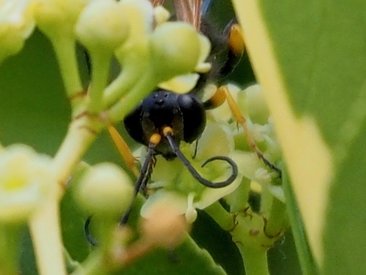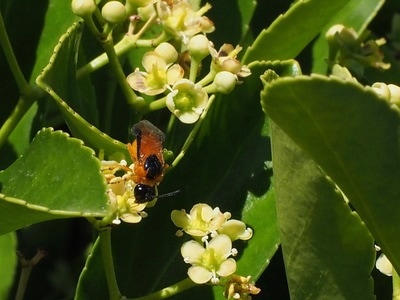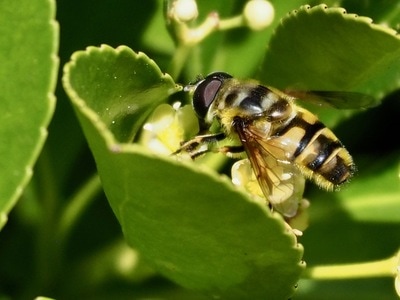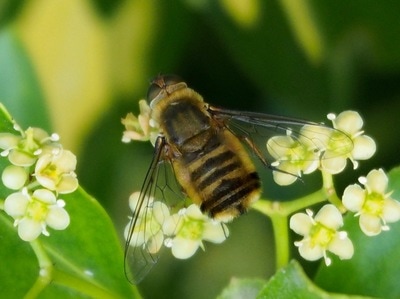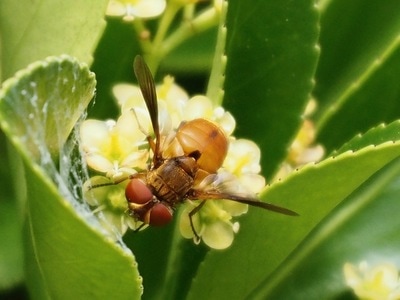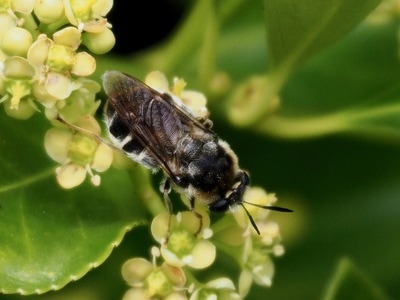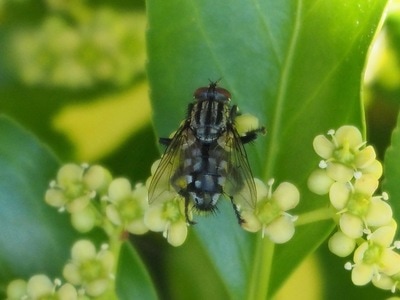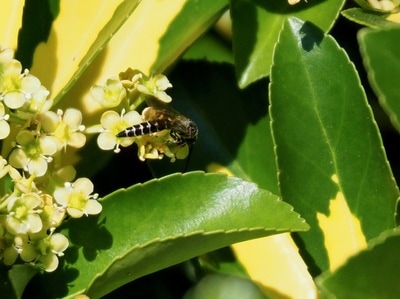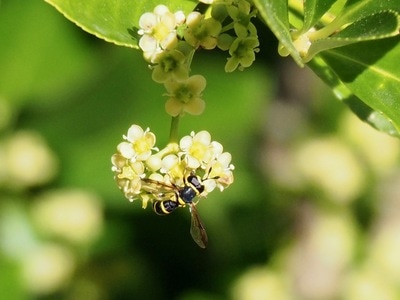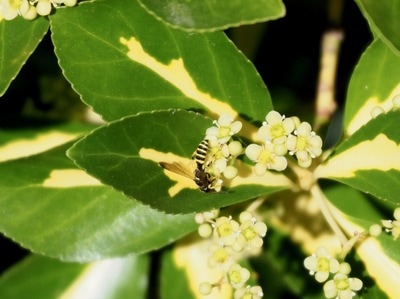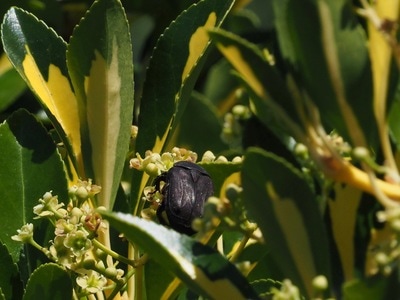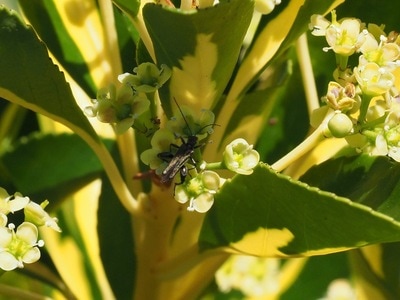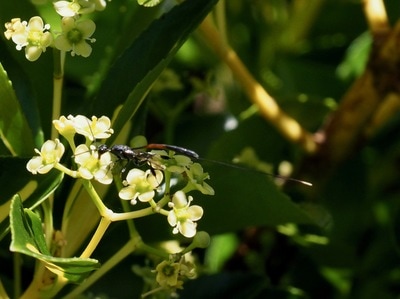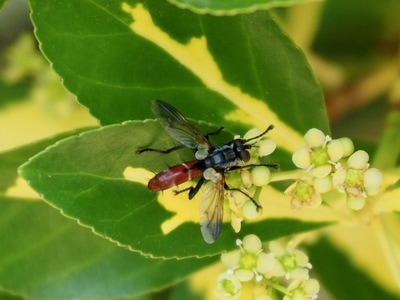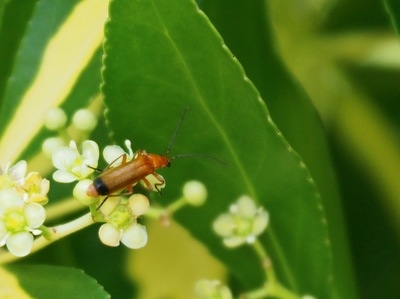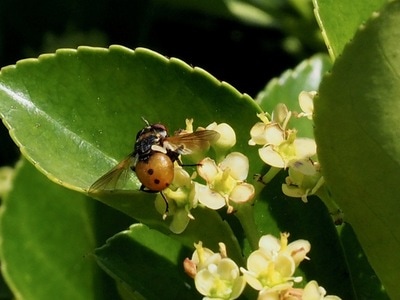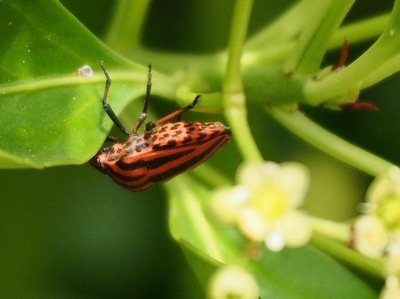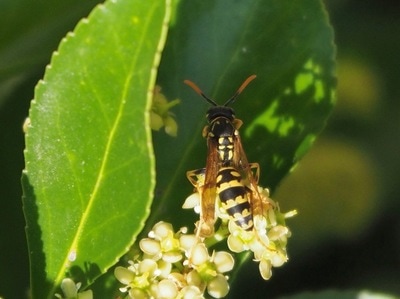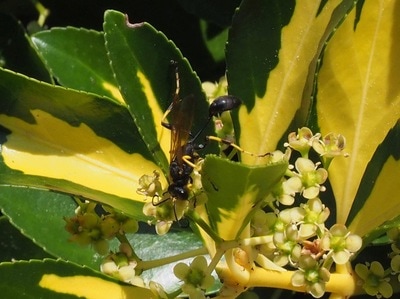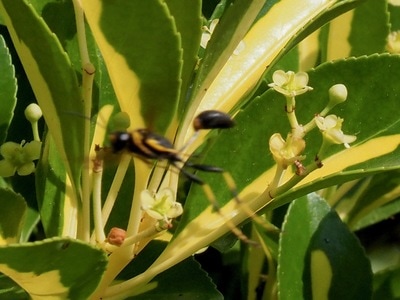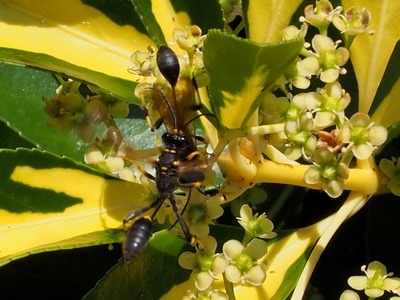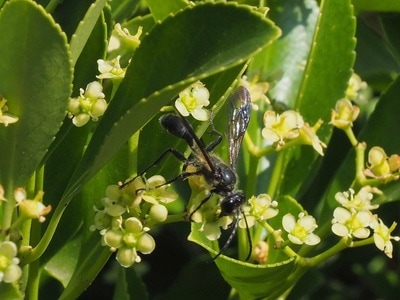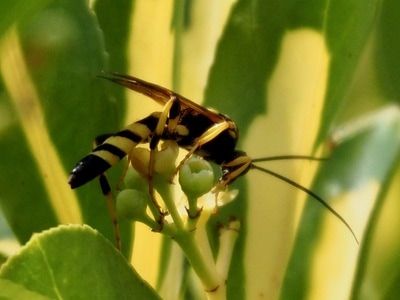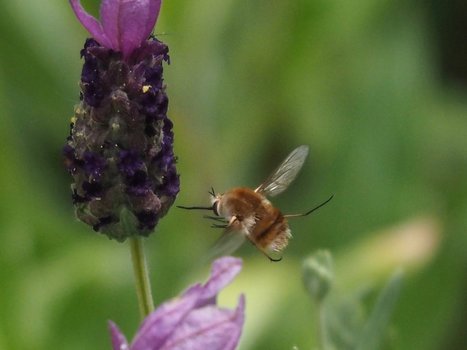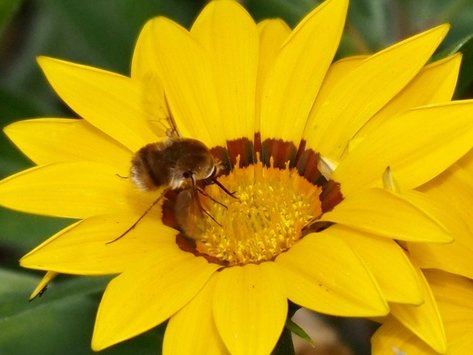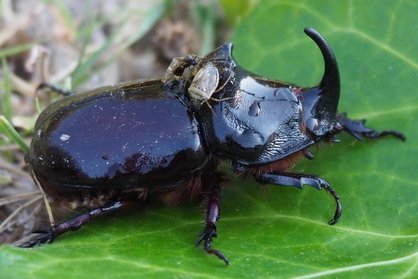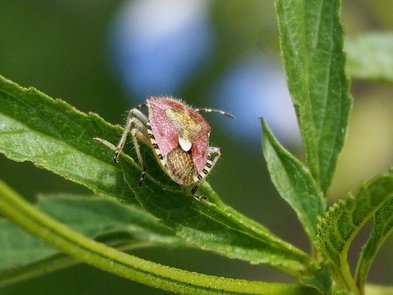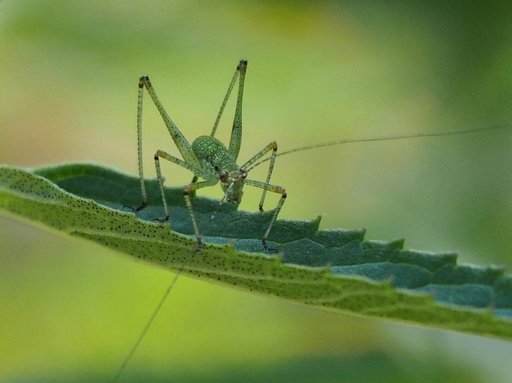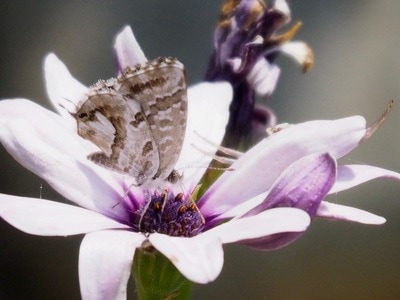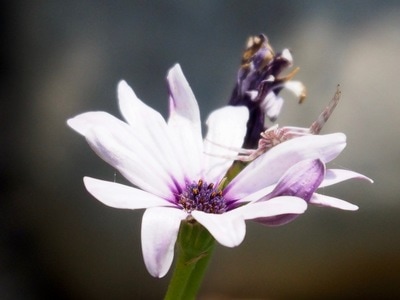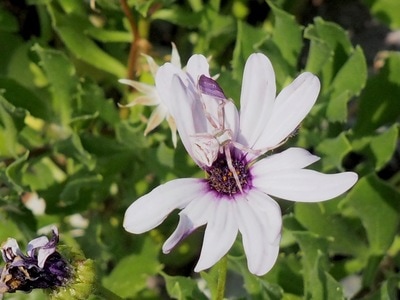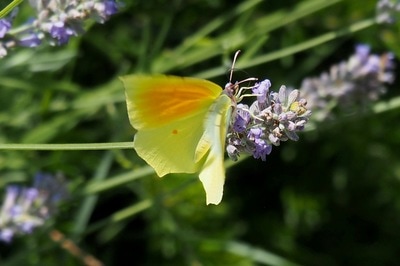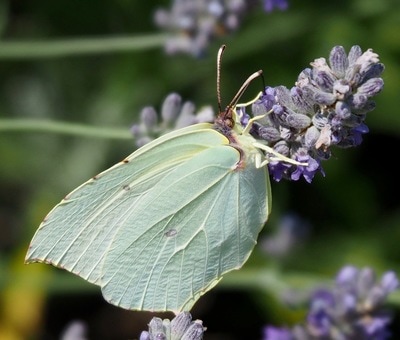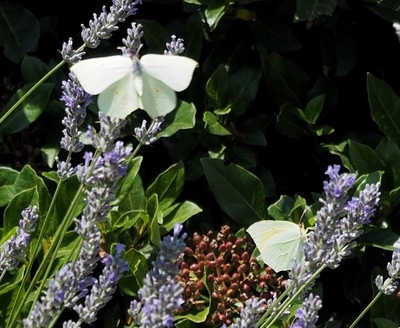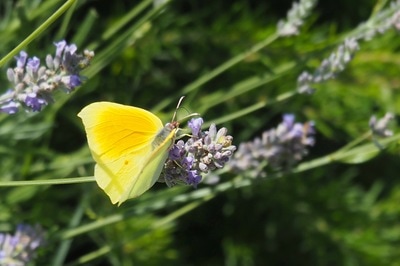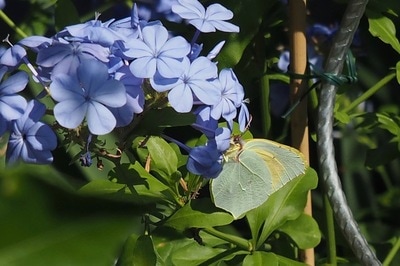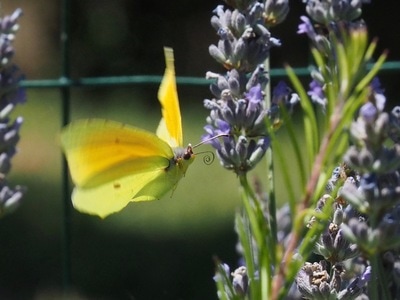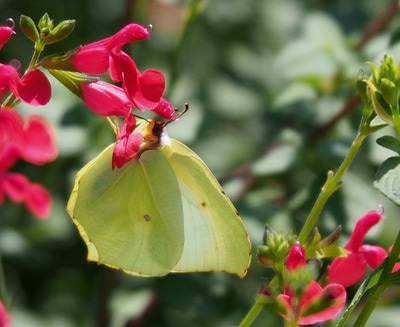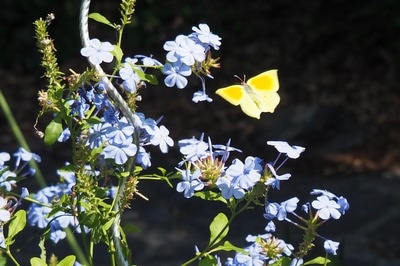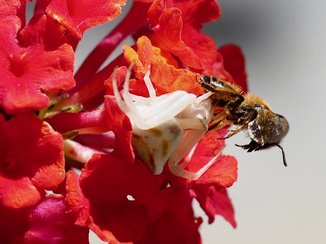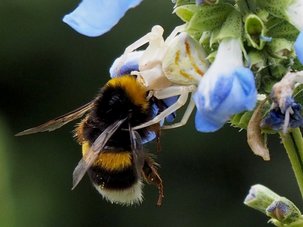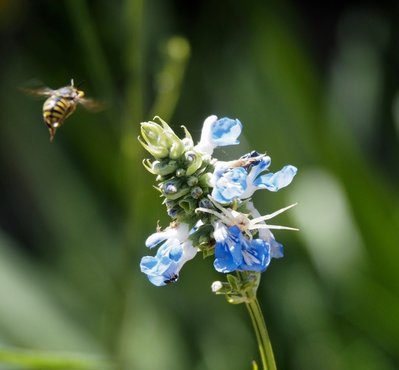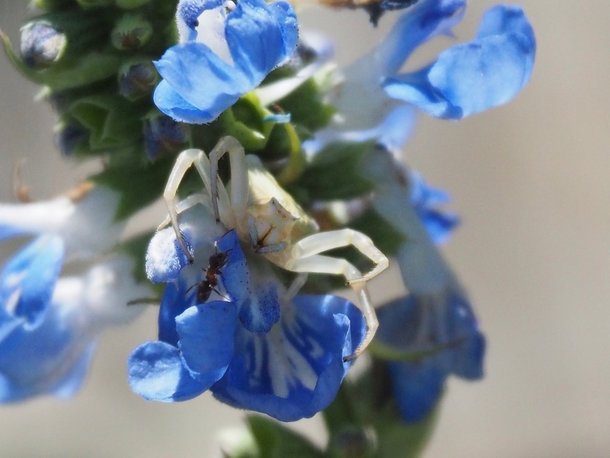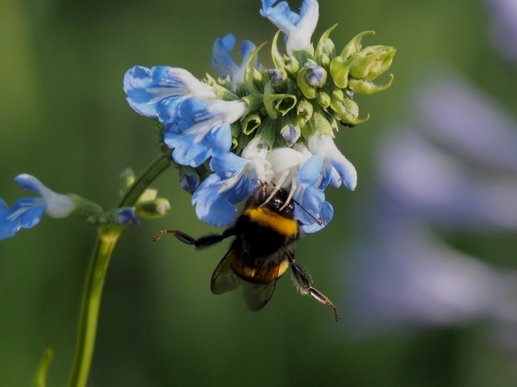It's stocked with plumbago, agapanthus, marjoram, French and English lavender, and several types of salvia - all beloved of butterflies and bees in summertime. However, the plant that wins the prize for attracting the greatest variety and number of insects is a euonymus. I wonder if it exudes a scent of death undetectable by the human nose, because most of its visitors are flies, hoverflies, wasps and beetles - none of the usual bees and only one butterfly.
Just as well, perhaps, that it's in the front garden and not near where we sit, out at the back. Having said that, the insects seem totally fixated on the flowers and pay not the slightest attention to me standing less than two feet away. There are so many - all sizes, from minute to relatively giant - in a continual dancing display over the whole shrub, that it's hard for me to know which to focus on. The best way to give you an impression of this is with a short clip.
Arguably most beautiful of all are the butterflies. In the last few days alone, in addition to Geranium Bronzes, I've seen a Lang's Short-tailed Blue, possibly two different Hairstreaks, a Marbled White, Swallowtail, Small Heath, Speckled Wood, and ever so many Cleopatras. The latter particularly adore the lavender - as many as eight at a time have been on one plant. In flight, males are orange-blushed sunshine, females elegantly understated. As you can see, I struggle to stop photographing them! (Click on pics for larger image)
